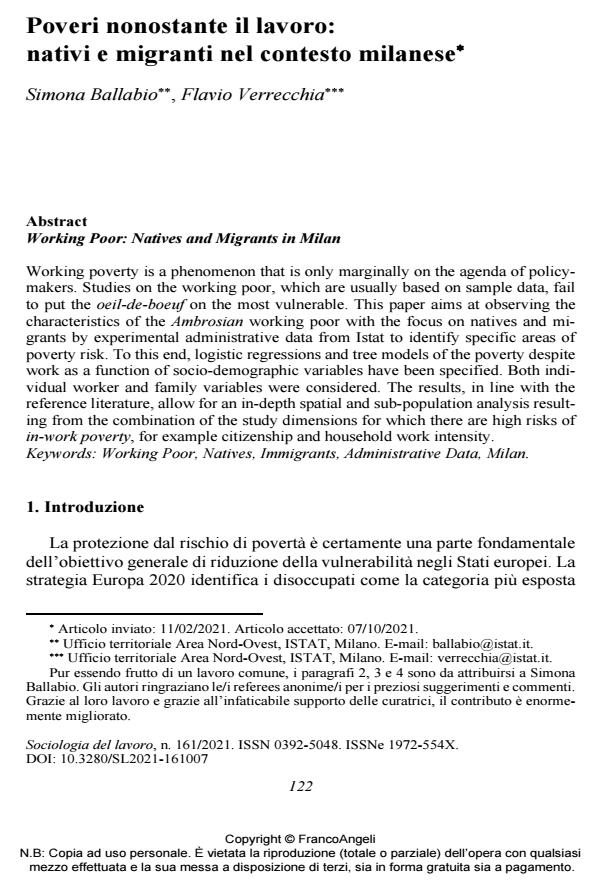Poveri nonostante il lavoro: nativi e migranti nel contesto milanese
Titolo Rivista SOCIOLOGIA DEL LAVORO
Autori/Curatori Simona Ballabio, Flavio Verrecchia
Anno di pubblicazione 2021 Fascicolo 2021/161
Lingua Italiano Numero pagine 26 P. 122-147 Dimensione file 309 KB
DOI 10.3280/SL2021-161007
Il DOI è il codice a barre della proprietà intellettuale: per saperne di più
clicca qui
Qui sotto puoi vedere in anteprima la prima pagina di questo articolo.
Se questo articolo ti interessa, lo puoi acquistare (e scaricare in formato pdf) seguendo le facili indicazioni per acquistare il download credit. Acquista Download Credits per scaricare questo Articolo in formato PDF

FrancoAngeli è membro della Publishers International Linking Association, Inc (PILA)associazione indipendente e non profit per facilitare (attraverso i servizi tecnologici implementati da CrossRef.org) l’accesso degli studiosi ai contenuti digitali nelle pubblicazioni professionali e scientifiche
La povertà lavorativa è un fenomeno che solo marginalmente rientra nell’agenda dei policy-maker. Gli studi sui working poor, che di norma sono basati su dati campionari, non riescono a porre l’oeil-de-boeuf sui più vulnerabili. L'obiettivo è osservare i caratteri dei working poor ambrosiani con un focus sulla comparazione tra nativi e migranti mediante l’uso di dati amministrativi sperimentali Istat per identificare specifici ambiti di rischio di povertà. A tal fine sono state specificate regressioni logistiche e modelli ad albero della povertà nonostante il lavoro in funzione di variabili socio-demografiche. È stata considerata sia la dimensione individuale del lavoratore sia quella familiare. I risultati, in linea con la letteratura di riferimento, garantiscono inoltre approfondimenti territoriali e per sub-popolazioni risultanti dalla combinazione delle dimensioni di studio per le quali ci sono elevati rischi di povertà lavorativa, come ad esempio per la cittadinanza e l’intensità lavorativa del nucleo familiare.
Parole chiave:povertà lavorativa, nativi e immigrati, dati amministrativi, Milano
Simona Ballabio, Flavio Verrecchia, Poveri nonostante il lavoro: nativi e migranti nel contesto milanese in "SOCIOLOGIA DEL LAVORO " 161/2021, pp 122-147, DOI: 10.3280/SL2021-161007